What are the signs of worsening diabetes?
Diabetes is a chronic disease, and having diabetes means that you have to watch your blood sugar, control your diet and exercise all the time in this life. So what are the signs in the body that indicate diabetes is worsening?
First:Blood sugar is out of control. If you were originally taking glucose-lowering medication and taking 10 units of insulin, your blood sugar was always well controlled. But recently you realized that the medication doesn't work anymore, and your blood sugar is still high even with insulin, which means you may need to increase the amount of insulin, or increase the dosage and adjust the medication.
Second:Weight loss all the time. My mother's diabetes was discovered when she kept losing weight inexplicably, and at first it was always thought to be due to exertion. If you were in stable weight control and all of a sudden you experience rapid weight loss again, it's important to consider if your diabetes is worsening.
Third:Itching all over the body, arm pain, leg pain everywhere. When diabetic patients develop peripheral neuropathy, there will be itching all over the body, unexplained arm pain and other abnormalities. If you pay close attention to hygiene and bathe all day long, and there is no exertion but it is itchy and painful, it is likely that peripheral nerve damage has occurred.
Fourth:The eyes can't see well. One of the complications that diabetic patients are prone to is the lesion of the fundus of the eye. If not able to timely treatment, it is likely to lead to blindness. If your eyes suddenly become blurred, you must pay attention to whether it is diabetes worsened, it is best to go to do a fundus examination.
The danger of diabetes to the human body is not the elevated blood sugar, but the complications that arise from long-term elevated blood sugar. Diabetic complications can damage large blood vessels throughout the body, as well as nerves, and can cause damage to organs such as the heart, brain, and kidneys. In addition to acute deterioration of diabetes, there will be chronic deterioration, and the manifestations vary.
When diabetic patients encounter acute infections, inappropriate treatment, improper diet, surgery, childbirth, etc., it will lead to a continuous elevation of glucagon, exuberant ketone body production in the liver, and acute deterioration of the manifestation - ketosis or ketoacidosis. Patients with ketoacidosis will have worsening symptoms such as polyuria, irritable thirst and excessive drinking, and fatigue. Continued aggravation of the condition will result in loss of appetite, nausea, vomiting, headache, and the odor of rotten apples in the exhaled breath; if left untreated, there will also be a decrease in the amount of urine, dry skin, a drop in blood pressure, and coma from shock.
Ketoacidosis is less common, and more common is chronic damage to various organs caused by long-term hyperglycemia. For example, the damage to the aorta, coronary arteries, cerebral arteries and other large and medium arteries, causing atherosclerosis, coronary heart disease, stroke, hypertension. If the lower limb arteries are violated, lower limb pain, intermittent claudication, sensory abnormalities, and even foot gangrene can occur.
Another common manifestation of chronic deterioration is retinopathy with vision loss, cataracts, glaucoma, and even blindness.
If the condition of diabetes further deteriorates, it will also trigger kidney disease and proteinuria, which is often referred to as bubbling urine. If you are not alerted at this stage and further deterioration, you will develop uremia and have to dialysis.
There are other deteriorating manifestations of diabetes that are more insidious and harder to detect, such as diarrhea, constipation, sensory abnormalities, frequent boils, carbuncles and other suppurative skin infections, and the tendency of women to have recurrent fungal vaginitis with varying manifestations, which is the main reason why there is a high prevalence of diabetes but a low rate of consultation.
Precisely because the early symptoms of diabetes are not obvious and there is no specificity in the symptoms when it worsens, the most effective means of preventing diabetes and the deterioration of the condition is to have regular medical check-ups and measure blood glucose on a regular basis, so that it can be detected and treated as early as possible.

To diagnose diabetes, all that is needed is to monitor blood glucose levels. Often, simply having high blood glucose levels does not cause significant discomfort, and the dangers of diabetes and determining whether the condition is worsening or not are mainly reflected in the emergence of complications of diabetes.
However, the complications of diabetes involve all tissues and organs throughout the body, and the lack of specificity of clinical symptoms makes it very easy for people to be "careless" about it. Clinically, most diabetic patients will say that they do not have any special discomfort, however, here "no discomfort" does not mean that it is really harmless, because the harm of diabetes is "subtle", it is like a "silent killer". It is like a "silent killer", in the people "do not notice" when, has harmed the organism, and has deteriorated. Therefore, diabetic patients need to have "a pair of eyes of fire", timely identification of easy "confusing" signs of deterioration, early detection, early treatment.
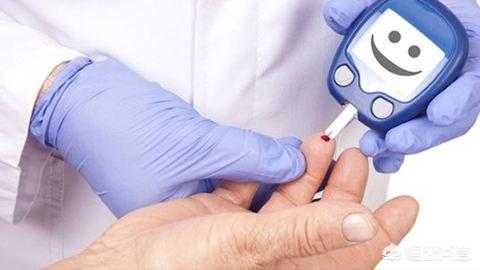
These "signs" may include:
1. Uncontrollable hyperglycemia, in which blood glucose levels continue to soar and are difficult to control even with a combination of medications.
2. From time to time, there will be chest tightness and panic, dizziness and fatigue, more than a couple of steps or climb a 2-story building began to gasp, and even chest tightness, pain in the precordial area, etc.; sometimes there will be a sudden half of the body is not strong, chopsticks can not hold up; there will be fuzzy vision, heavy shadow, always feel like mosquitoes in front of the eyes in the fly, etc., unknown that may be the old, physical strength is not good, the eyes are also flowery! The truth is that diabetes may lead to coronary heart disease, heart attack, cerebral infarction precursor and retinopathy.
3. Frequent recurrent skin infections, itchy skin, folliculitis, boils, carbuncles, tinea pedis, ringworm, acute and chronic periodontitis, bleeding gums, pus overflow, etc., and urinary tract infections and vaginitis in women, etc., which are often mistaken for common infections, but in fact diabetic patients are more susceptible to infections than the general population, and are more difficult to control than the general population.
4. There are also abnormal skin sensations, such as pain hypersensitivity, burning sensation, ants sensation, numbness of hands and feet, etc., but they are not typical and are thought to be simple skin allergies or dryness, etc., but in fact, they may be caused by diabetic peripheral neuropathy.

5. Cold feet, always numb and numb, dry skin on the feet, black toes and even ulcers, and serious development to gangrene are typical of diabetic foot.
6. In addition, symptoms such as dyspepsia, poor appetite, diarrhea or constipation, reduced quality of sex, sweating or lack of sweating, which are so common that they are not thought of as symptoms, and which can be tolerated without seeing a doctor, may be related to the autonomic neuropathy that accompanies diabetes mellitus.
In summary, we can see that many of the symptoms of diabetes deterioration are "meet without knowing", I hope that all sugar users, active control of blood glucose, the emphasis on the usual, can not be for no discomfort to take it lightly.
Answerer: Zhang Kehui, M.S., M.A.
Welcome to Life Calling for more useful health knowledge.
Diabetes is a chronic progressive disease, if you can adhere to the medication, blood sugar, even if it can not be controlled in the normal range, if you live a more regular life, purely in terms of the course of diabetes, diabetes is very small chance of deterioration. After all, diabetes is not a tumor disease. Its development process is closely related to our usual blood sugar control.
The so-called deterioration of diabetes mellitus is considered to be related to several acute complications that occur in diabetes mellitus.
Diabetic ketoacidosis, diabetic hyperosmolar syndrome due to hyperglycemia:
diabetic ketoacidosis
Diabetic ketoacidosis is an acute metabolic disease characterized by severe disorders of glucose, protein and fat metabolism due to insufficient insulin or inappropriately elevated glucagon. Due to the double obstacle of insulin and glucagon secretion, the function of glucose transporter in the patient's body is reduced, glycogen synthesis and sugar utilization are decreased, glycogen decomposition and gluconeogenesis are strengthened, and blood glucose rises significantly. At the same time, due to the fat metabolism disorder, fat decomposition produces a large number of ketone bodies, and eventually the formation of ketoacidosis.

Patients may experience increased polyuria and thirst, marked weakness, weight loss, gradual loss of appetite, nausea, vomiting, and inability to eat and drink, etc. A few patients may present with acute abdominal pain with abdominal muscle tension and diminished bowel sounds, and be misdiagnosed as acute abdomen. Acidosis is characterized by deep and large breaths, and the breath smells like rotten apples. The patient will be obviously dehydrated, with a drop in blood pressure and body temperature, and an accelerated heart rate. In severe cases, coma may occur, resulting in life-threatening conditions.
Diabetic hyperosmolar coma
Patients with diabetic hyperosmolar coma may present with severe hyperglycemia but without significant ketoacidosis, high plasma osmolality, severe dehydration and varying degrees of impaired consciousness.
Hypoglycemia:
In the course of diabetes treatment, low blood sugar can occur, leading to symptoms such as panic,, sweating, dizziness, etc. In severe cases, coma and even life-threatening situations can occur.
When hypoglycemia, patients can have obvious symptoms, manifested as panic, home, hand shaking, mental changes, personality changes, cognitive impairment, convulsions, etc., and the condition changes relatively quickly. Timely treatment is needed.
Diabetes mellitus combined with cardiovascular stroke:
Long-term unsatisfactory blood glucose control, the patient will develop atherosclerosis of the large blood vessels, when atherosclerosis gradually progresses to appear blood vessel blockage or spasm, acute ischemia will occur, leading to the emergence of acute stroke.

Patients can present with dizziness, nausea, vomiting and abnormal limb movement, and in severe cases, coma, brain herniation or even life-threatening conditions.
Diabetes mellitus combined with organ failure:
With a long history of diabetes and poor glycemic control, damage to target organ function can occur, and if the function remains uncorrected for a long period of time, organ failure can occur after the loss of compensation, such as cardiac failure, renal failure, and so on.
Patients may exhibit breathlessness, decreased urine output, poor eating and sleeping, obvious swelling, and so on. In severe cases, organ transplantation or hemodialysis is required.

Diabetes mellitus combined with infectious diseases:
Diabetic patients due to the body's poor resistance, patients are very easy to combine infections, the most common are lung infections, urinary tract infections, skin infections and so on.
Due to higher blood sugar, decreased chemotaxis of white blood cells and weakened function of proteins, infections are generally not easy to control and spread very easily, leading to infectious shock, gangrene of the diabetic foot, and other serious conditions, with the risk of amputation and fatality.
To summarize: the above are the so-called deterioration manifestations on the basis of chronic diabetic lesions. All of these critical situations can be avoided if the blood glucose can always be kept stable and timely adjustments can be made when the aura appears.
I'm Dr. Sun, pay attention to Dr. Sun talk about sugar, continue to learn more quality health knowledge, help please like, have questions please leave a message, will reply!
According to a WHO report, diabetes will become the seventh leading cause of death in 2030. Diabetes in our daily life is not uncommon, in fact, diabetes itself is not terrible, terrible is accompanied by complications of diabetes. In the early stages of diabetes, people do not feel the obvious changes in the body, always think that there is no big deal, all kinds of food and drink do not control blood sugar, the ensuing complications will teach you to do ----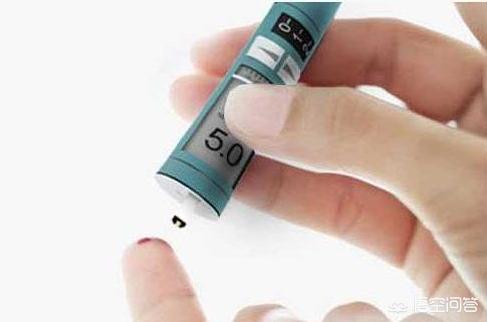
A, diabetes early body does not have any big changes, but if the body appears the following symptoms, it means that diabetes has been in the deterioration of the road farther and farther, you have to rush to the hospital for medical treatment!
Second, if there are symptoms such as dark urine, hematuria, increased foam in urine, and lumbago, it means that the kidneys have been diseased, and too high a concentration of blood glucose will damage the blood vessels of the kidneys, leading to the appearance of the above symptoms.
Third, long-term high blood sugar easily caused by cataract and retinopathy, the initial performance of blurred vision, the later almost can not see things or even lead to blindness, all because high blood sugar will damage the fine blood vessels of the eye.

Fourth, high blood sugar will damage the nerves of the whole body and symptoms of numbness of the limbs. It can also lead to muscle relaxation, which can easily cause bunions, flat feet and other deformities.
Fifth, diabetes destroys the functioning of the body's immune system, making it more susceptible to infections than normal.
VI. Persistently high blood glucose concentration. In the early stage of diabetes, through medication and diet control, the blood glucose concentration will not be very high, if the blood glucose concentration is persistently high, it means that the diabetes has entered the deterioration stage.
Diabetes is a chronic disease, in the early basically will not have any symptoms, but this does not mean that you can take it lightly, once the deterioration of want to rely on medication is very difficult, so the prevention of the early stage is as important as the treatment of the later stage, and at the same time, control of the diet is also a very important means of treatment of diabetes.

Chronically higher-than-normal blood sugar in sugar addicts can damage theNerve fibers and blood vessels of the heart, eyes, limbs, skin, kidneys and other vital organs, which in turn causes skin infections, decreased kidney function, and other related symptoms, including the following signs of deterioration.
Skin-related symptoms
The skin is one of the organs most and fastest affected by diabetes, and it's also the skin where we are most likely to see signs of deterioration. Diabetes can cause poor circulation in the skin, slow wound healing, decreased immune function, itchiness or dryness, and a greater susceptibility to fungal or bacterial infections or other types of rashes that can be difficult to eliminate.
Specific symptoms may include:
Rash/infection, sometimes accompanied by itching, fever, swelling, redness, and pain;
Bacterial infections (including vaginal yeast infections, staphylococcal infections);
Granuloma in the eyes and eyelids;
Acne;
Fungal infections (including Candida infections of the digestive tract, fungal infections within the folds of the skin including the nails, chest, between the fingers/toes, inside the mouth and around the genitals);
Ringworm, tinea cruris, tinea pedis;
Skin Disease;
Diabetic necrotizing disease;
Blisters and scaling, especially around infections;
Folliculitis (infection of hair follicles).
Eye Related Symptoms
Diabetes affects the microscopic blood vessels and nerves in the eye, and patients will be prone to eye problems. Almost every type I diabetic, and most type II diabetics, will develop non-value-added retinopathy. The prevalence of other eye diseases can also be higher than the general population.
Eye-specific symptoms include:
Light spots in the eyes, loss of vision and even blindness;
Diabetic retinopathy;
Nerve damage to the eye;
Cataracts;
Glaucoma;
Macular degeneration.
Symptoms associated with nerve damage
About half of people with diabetes will develop some kind of nerve damage, especially if their blood sugar is poorly controlled for years. This mainly includes peripheral nerve damage (affecting the hands and feet), autonomic nerve damage (affecting organs such as the bladder, bowel, and genitals), and other forms of damage to the spine, joints, cranial nerves, eyes, and blood vessels.
Specifically:
Tingling and numbness of the feet, as if they were stepping on needles and prickly needles;
Hands and feet burn, sting, and ache as if shot;
Sensitive skin that feels particularly hot or cold;
Muscle pain, weakness, and instability;
Fast heartbeat;
Difficulty sleeping;
Sweating appears to change;
Erectile dysfunction, vaginal dryness and lack of orgasm due to damage to the nerves around the genitals;
Carpal tunnel syndrome;
Prone to injuries or falls;
Sensory changes occur, including hearing, taste, smell, and sight;
Digestive difficulties, including frequent bloating, constipation, diarrhea, heartburn, nausea, and vomiting.
Symptoms associated with heart disease and peripheral vascular disease
Diabetics are more prone to atherosclerosis, heart disease, and peripheral vascular disease. You need to be alert to the following related symptoms.
Heart disease related:
Shortness of breath;
Weakness;
Dizziness;
Excessive sweating without an obvious cause such as hot temperatures;
Pain in shoulder, jaw, and left shoulder;
Chest pain or a feeling of pressure, especially with activity;
Disgusting.
Peripheral vascular disease correlation:
- Spasms when walking (intermittent claudication), pain in buttocks;
- Cold feet;
- A weak or absent pulse in the feet or legs;
- Reduction of fat under the skin of the calves;
- Reduced leg hair on lower legs.
Symptoms Related to Hypogonadism
The kidneys are responsible for filtering body wastes, forming urine, and secreting important hormones such as adrenaline and erythropoietin, while diabetes may cause a decline in kidney function by damaging blood vessels and nerves in the kidneys.
A person may experience the following symptoms:
Anemia, which is caused by a decrease in erythropoietin, because anemic people also experience symptoms of inadequate blood supply such as chills, fatigue, and dizziness;
Edema, especially swelling of the hands and feet, and possibly facial puffiness;
Bad breath or a metallic taste, which is caused by excessive accumulation of waste products in the blood;
Problems with urination, including increased frequency of urination, increased volume of urine, getting up at night to urinate, and difficulty urinating with a feeling of pressure;
The presence of foamy urine or urine that is brown, red or purple in color.
Note: Diabetic patients with poor long-term blood sugar control are at higher risk for coronary heart disease, infertility or high-risk pregnancies, vision loss, digestive problems, and other health problems.
The above content is edited and organized by "ask the doctor" for you, want to know more authoritative health knowledge, welcome to pay attention to us!
When you have diabetes, the biggest worry is the fear of deterioration, and deterioration is a series of complications.
My father-in-law died because of diabetes. Because of late detection and incomplete treatment, his blood sugar was repeatedly high, leading to a series of complications, and he was ultimately unable to recover.

The year after I found out about my diabetes my blood sugar levels were still over ten and I had to increase the amount of insulin. Both arms were full of needle holes and the skin hardened. There was no choice but to switch to injecting the thighs, which were also full of needle holes and the skin hardened, and finally to injecting the belly.
The body was also getting thinner and thinner, dropping from over 140 pounds to over 100 pounds. The skin all over the body also often itched inexplicably. Soon the lower limbs appeared edema, urine volume also decreased. Blood tests for creatinine and urea were more than twice as high, while albumin was reduced by more than half. Doing blood dialysis in the foot needle eye, infection can not heal, along the blood vessels ulcerated into the length of up to five or six centimeters.
Soon after, blurred vision also appeared in the left eye, which was found to be the result of a hemorrhagic fundus lesion. The same problem then developed in the right eye, culminating in retinal detachment and double vision. Symptoms of chest tightness, shortness of breath, and telangiectasia also appeared, with ventricular hypertrophy accompanied by heart failure. The course of this series of complications progressed rapidly and could not be controlled at all, either by injections, fluids or hemodialysis. The final days saw heart failure, respiratory failure, uremia to hepatic coma and a quiet death.

It has been more than 20 years since my father-in-law passed away, and every time I think about it, it is heartbreaking and regrettable. In fact, diabetes is not scary, what is scary is its complications. Earlier detection, earlier treatment, earlier blood sugar control, I believe that my father-in-law will be able to enjoy a peaceful old age. Diabetic patients, don't let the lesson of blood repeat itself. Take it seriously, keep your blood sugar under control consistently, and don't let yourself and your family have regrets!
Your attention and likes are the biggest support for me!
As we all know, diabetes is a chronic disease, the course of the disease is relatively long, if the blood sugar control is not good, may cause a variety of complications, known as diabetes complications up to more than 100 kinds. When diabetic patients appear below these manifestations, it may mean that the "deterioration period".
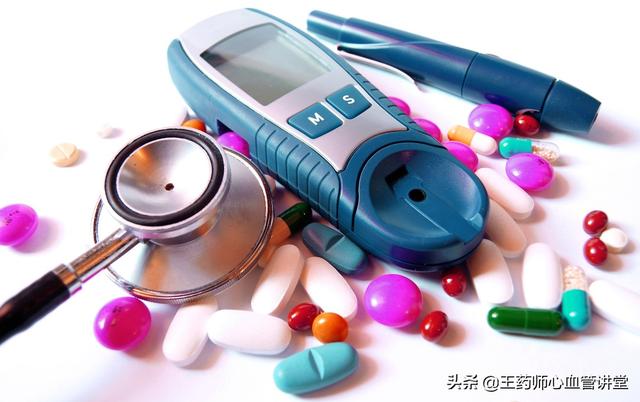
What are the signs of worsening diabetes?
1. High blood sugar:High blood sugar is a clear symptom of diabetes deterioration, if you find that the glucose-lowering drugs you used to take or insulin injections are no longer effective in controlling your blood sugar, you need to be vigilant, it may be that the disease is progressing again, and you need to consult a doctor in time to increase the dosage of medication or adjust the medication regimen under the direction of the doctor.
2. Continued weight loss:Weight loss is a typical symptom of diabetes, which is due to the reduced ability to utilize glucose. If you were at a stable weight but have recently lost weight suddenly and for no apparent reason, it may mean that the condition is getting progressively worse.
3. Extreme thirst:Many diabetics experience frequent thirst, which is due to the rise in blood glucose, causing osmotic diuresis, leading to a lack of water in the body because of the phenomenon of thirst. If thirst has recently worsened and drinking large amounts of water does not relieve it, you need to be alert to the worsening of the condition.
4. Vision loss:Diabetes is a systemic metabolic disease, high blood sugar will destroy the microvessels in the fundus of the eye, inducing diabetic retinopathy, which will affect vision, manifesting as blurred eyes, inability to see clearly, and in serious cases, it will lead to retinal detachment, causing blindness. If you frequently have blurred vision and double vision, you must pay attention to it and seek medical treatment as soon as possible.
5. Itchy skin:Diabetic patients, especially those with poor long-term glycemic control, are in a state of high blood sugar for a long time, which will stimulate the nerve endings of the skin, resulting in itchy, dry skin, and some patients will not be able to control the scratching, even scratching the skin, which can easily lead to infection.

6. Kidney problems:Diabetes mellitus will damage the blood vessels of kidney and induce diabetic nephropathy. Patients may have deepening of urine color or blood in urine, foamy urine, or even proteinuria, which will be accompanied by pain near the kidneys. In addition, patients may also have lower limb edema, elevated blood pressure, black and yellow color and other symptoms.
7. Cardiovascular problems:Diabetes mellitus can cause macrovascular lesions and induce cardiovascular and cerebrovascular diseases, such as cerebral hemorrhage, coronary heart disease, etc. At present, the most serious pathological changes that threaten the life of diabetic patients are cardiovascular lesions, and more than 70% of the patients die of various complications of cardiovascular lesions. Symptoms of cardiovascular and cerebrovascular lesions mainly include chest tightness, palpitations, dyspnea, dizziness, headache, drowsiness, fatigue and so on.
How can I prevent my diabetes from getting worse?
1. Keep your blood sugar under control:This is the most crucial point. As long as you can keep your blood sugar within the ideal range, you can avoid damage to various organs and reduce the risk of complications. Most diabetics need to take oral hypoglycemic drugs or insulin injections for a long period of time, and it is important to follow the doctor's instructions on how to use the medication and not to take it or stop taking it. In addition, it is important to do regular blood glucose testing to keep abreast of blood glucose control so that abnormalities can be detected in a timely manner.
2. Rationalize your diet:For diabetic patients, it is necessary to strictly control the diet, limit the total daily calorie intake, promote light diet, eat less high-fat, greasy and high glycemic index food, eat more vegetables, scientific consumption of staple food, can be coarse and fine mix, control the intake of sugar and salt.
3. Proper exercise:Adhering to proper exercise has great benefits for controlling blood sugar. Exercise can not only consume excess calories in the body, but also promote metabolism and help diabetics lower blood sugar. In addition, exercise can also improve the body's immunity, so that the body's organs from external damage. Exercise can be chosen according to your own condition.
I am Pharmacist Wang, dedicated to helping you manage your body by explaining complex and difficult disease knowledge in plain words. Your likes are my greatest motivation! Also, if you have a family member who suffers from worsening diabetes, please pass this article on to them!
This is a very good question! Have you ever wondered why Chinese people are so concerned about diabetes?
I think there's at least this3点:firstlyDiabetes does not discriminatethe old, the middle-aged and the young, and you can get diabetes from as young as a handsome 20 year old to as old as 80 years old;secondlyThe number of people with diabetes in China, the highest in the world, was at least 114.4 million in 2017 statistics alone;thirdlyWhat does it mean that the diagnosis rate of diabetes in our country is only 30-40%? It means that out of every 10 people with diabetes, only 3-4 people, know that they have diabetes, while the other 6-7 people, do not know that they have diabetes. If we extrapolate according to this number, the number of diabetics in our country, at least300-400 million, it's too scary, so people take it very seriously.
The direct cause of diabetes is due toinsulinAbsolute or relative underproduction and/or impaired insulin utilization caused by theCarbohydrates, proteins, fatsMetabolic disorders toabnormally high blood sugar levelas the main symbol.
In other words, diabetes is characterized by the definition of diabetes:Insulin-related, marked by hyperglycemia, and as a result of disturbed metabolism of the 3 major nutrients.
Another very scary reason why diabetes, is scary, is that in its early stages, it is oftenNo symptoms., it's usually hard to find out you have diabetes if you don't test your blood sugar physically.
Wait until there is what we often refer to as "more than three, less than one"By the time the symptoms, i.e., excessive drinking, excessive urination, excessive eating, and weight loss, the disease has usually progressed to an intermediate stage.
If it then progresses to the development of diabeticcomplications (undesired side-effect of medical procedure)Even though the body'sVessels, nerves.When lesions also occur, then it means that diabetes has worsened.
Among the most typical manifestations of deterioration:Sexual visual impairment, diabetic foot, diabetic nephropathy.
Today, I'm going to talk about these 3 major complications with the gang, just FYI.
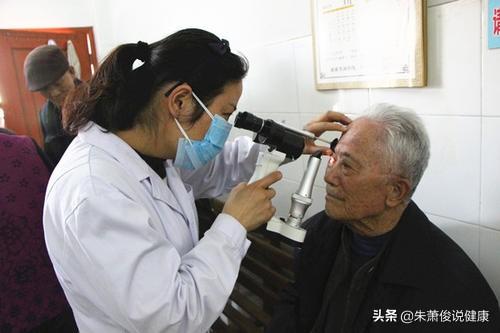
One manifestation of deterioration: visual impairment
Having diabetes with poor blood sugar control and chronic hyperglycemia will lead to diabeticretinal vasculopathy.Visual impairment or even blindness occurs.
The most common are diabetic cataracts and glaucoma, as described below, just to name a few.Diabetic cataracts.
Diabetic cataracts, as discussed here, are defined as occurring in patients with juvenile-type diabetes mellitus who are under 30 years of age and have severe disease.
Simply understood, diabetic cataracts form this way:
The energy for the lens of our eyes has to come from glucose in the atrial fluid, but glucose has to form the intermediate product sorbitol when it is converted to energy.
If the blood sugar is normal, then the converted sorbitol is not abnormal; if the blood sugar is too high for a long period of time, then the converted sorbitol will increase; because sorbitol can not pass through the lens capsule membrane, so it can only be a large amount of accumulation in the lens, which makes the osmotic pressure in the lens increase, the water increases, resulting in turbidity, and eventually the formation of cataracts.
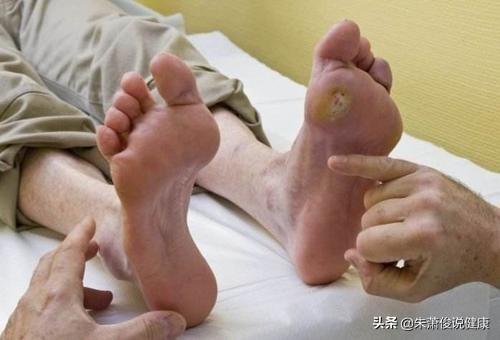
Deteriorating manifestations of the second: diabetic foot
The diabetic foot, which is the foot of a diabeticBlood vessels, nervesLesions occur, resulting in inadequate blood supply to the foot, abnormal sensation, and symptoms of ulceration and infection.
In severe cases, it can also affect the muscles and bones of diabetics, leading to tissue necrosis and even the need for amputation.
Simply understood, this is how the diabetic foot develops:
1. Hyperglycemia causes peripheral neuropathy:If the diabetic's blood sugar is not well controlled, long-term high blood sugar, will lead to peripheral nerve lesions, resulting in diabetic limb sensation is weakened or disappeared, so that the foot for pressure, foreign objects, or cold and hot feelings decreased, easily lead to trauma, burns to form ulcers.
2. Hyperglycemia leads to peripheral vasculopathy:If the diabetic's blood sugar is not well controlled, long-term high blood sugar, will lead to vascular lesions, resulting in reduced blood flow to the lower limbs, so that the foot lack of oxygen and nutrient supply is insufficient, the lower limbs skin temperature reduction, pain, intermittent claudication, ischemia; in severe cases, it can lead to ulcers, gangrene.
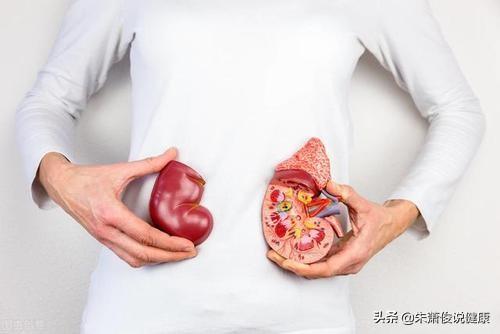
Worsening manifestations of the third: diabetic nephropathy
Diabetic nephropathy, is a chronic kidney disease caused by poor glycemic control and long-term high blood sugar in diabetic patients, it is an important cause of chronic kidney disease and end-stage renal disease (kidney failure).
Simply understood, diabetic nephropathy develops this way:
If diabetic patients have poor glycemic control and long-term hyperglycemia, it will trigger microangiopathy in diabetic patients, which will lead to the increase of renal vascular pressure, resulting in a series of changes in the morphology and structure of the kidneys, such as the appearance of large amounts of proteinuria, hypertension, edema, and even anemia, which is called diabetic nephropathy.
Diabetic nephropathy, which may eventually progress to kidney failure, is a major cause of death from diabetes.
To summarize: diabetic complications, the overall manifestation of diabetes deterioration; among them, visual impairment, diabetic foot, and diabetic nephropathy, are the 3 more common manifestations of deterioration.
Do you agree with me?
Daily update on health hotspots, medical pain points; if what I say, is exactly what you think, then please like, retweet, follow Zhu Xiaojun said health!
Special note: All recommended medications in the comments section should be tried with caution and never purchased with a call!
Diabetes is also a chronic disease, diabetes means that from now on should always pay attention to monitoring blood glucose, if long-term because of poor glycemic control, persistent hyperglycemia and long-term metabolic disorders may lead to systemic tissues and organs, especially the eyes, kidneys, cardiovascular and neurological damage and its dysfunction and failure, the disease serious cases can cause water loss, electrolyte disorders and acid-base balance disorders, such as acute Complications such as acidosis and coma.
1, Diabetic symptoms are divided into two categories: those related to metabolism and those related to various acute. Chronic complications related. If the effect of blood glucose control through medication are not up to the standard of clinical blood glucose, it means that your blood glucose is slowly starting to enter the development of serious diseases.
2, weight loss If you have to come to diabetes, pre-blood sugar control is very good, and appetite and food volume are restored to the original positive diet; but recently weight loss or even wasting, blood sugar control is not good, suggesting that may be your blood sugar in the development of deterioration.
3, generalized fatigue is due to glucose can not be fully oxidized, and lead to generalized fatigue, mental depression appears, can be considered may be the worsening of the disease.
4, Loss of vision If the patient complains of loss or blurring of vision, the worsening progression of the disease should be considered. This may be mainly related to the change of osmotic pressure of crystalline body caused by hyperglycemia, resulting in the change of crystalline refractive index, which can lead to blindness. If these phenomena occur, the deterioration of the disease should be considered, and should go to the hospital in time for examination and timely treatment.
Once diabetes is diagnosed, you should correctly recognize the knowledge of the disease and carry out self-testing of blood glucose and urine sugar. Actively use good medicine to control blood sugar, timely and active treatment to prevent various complications.
This question and answer are from the site users, does not represent the position of the site, such as infringement, please contact the administrator to delete.